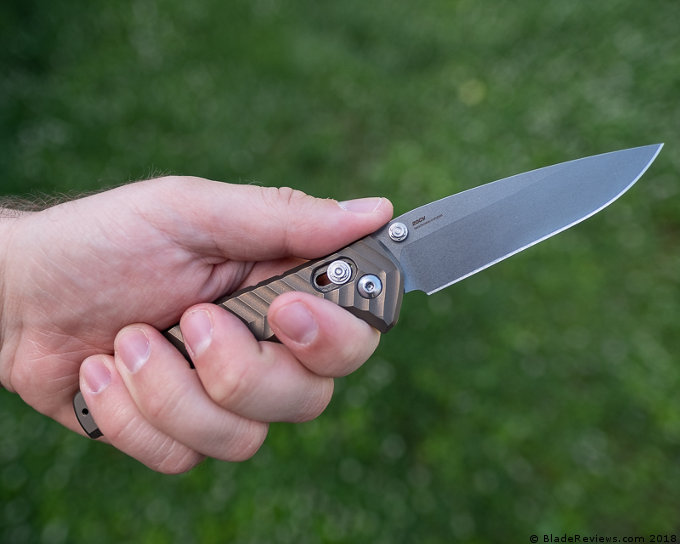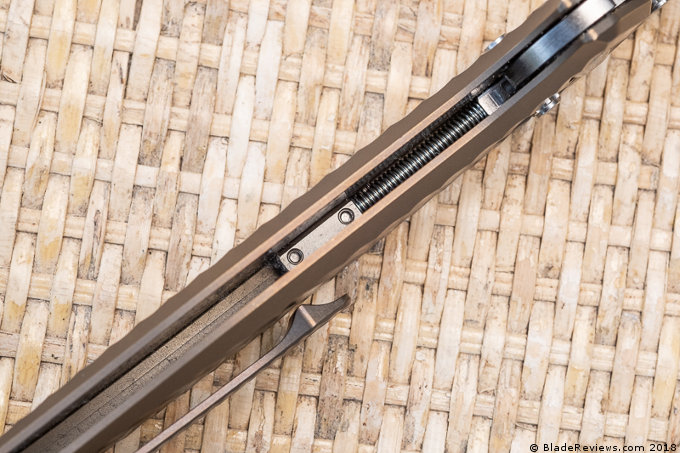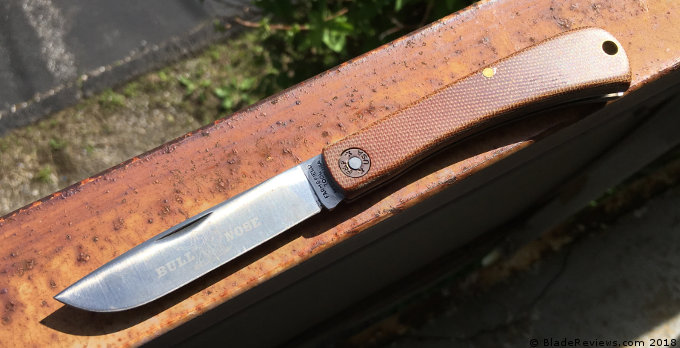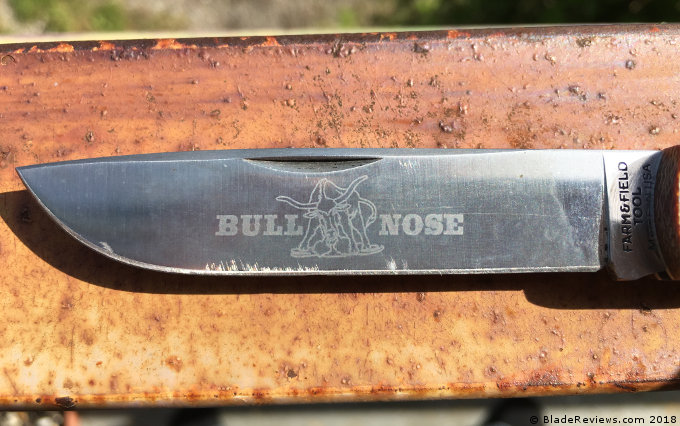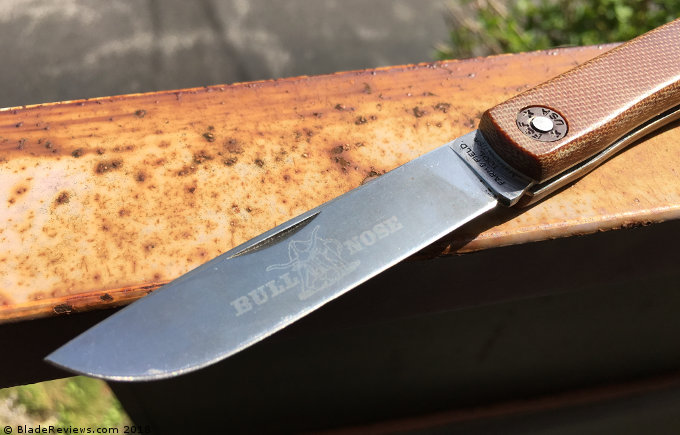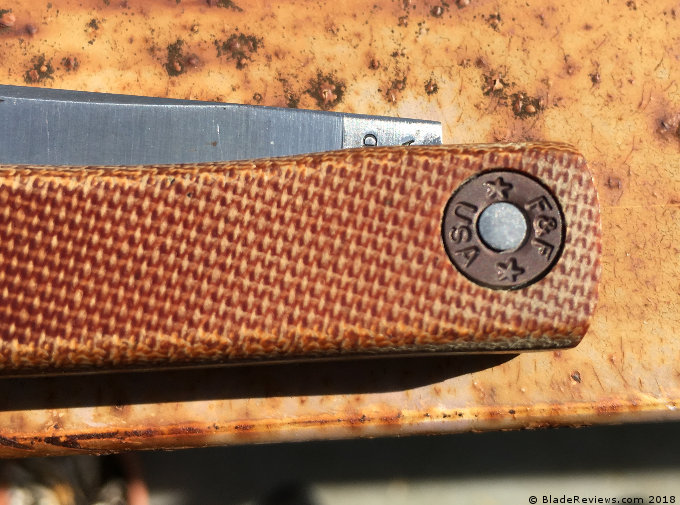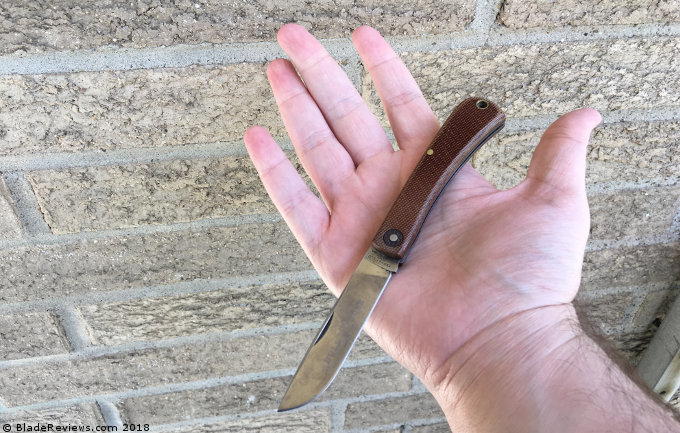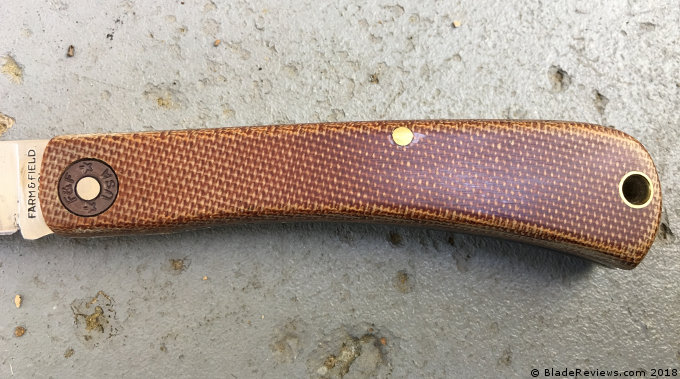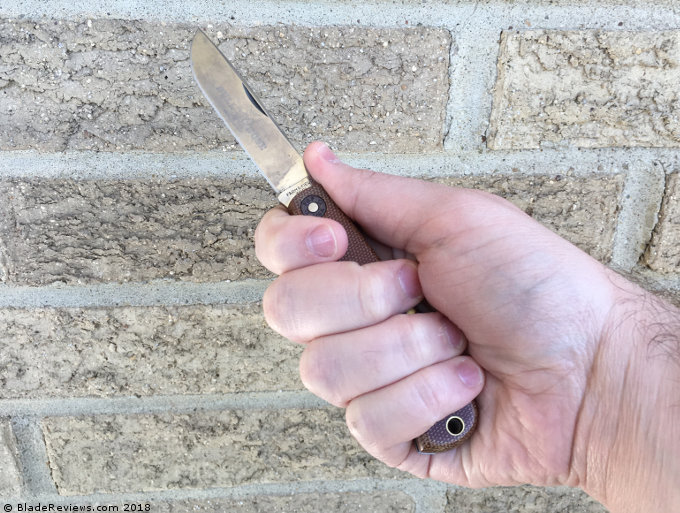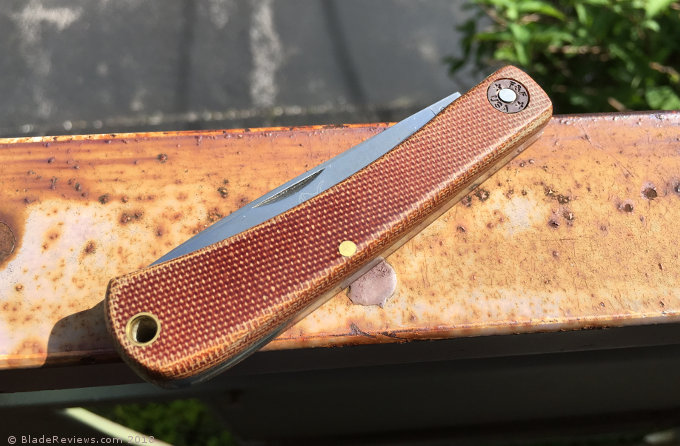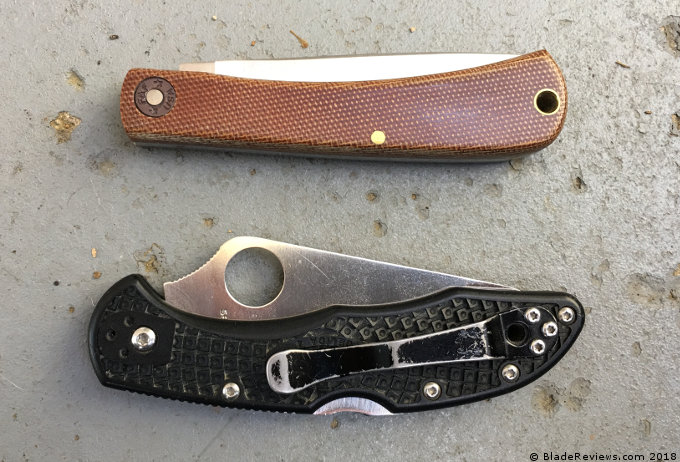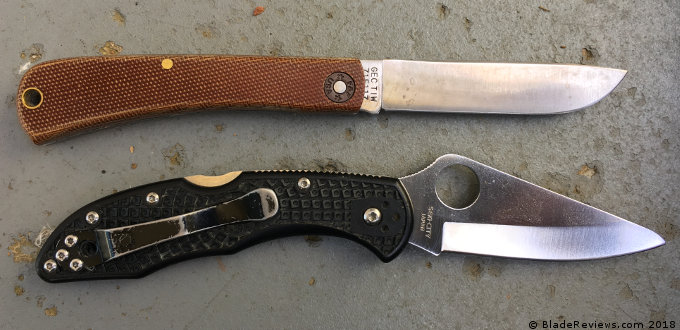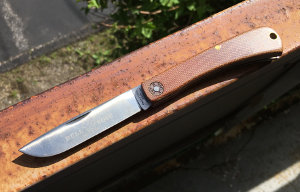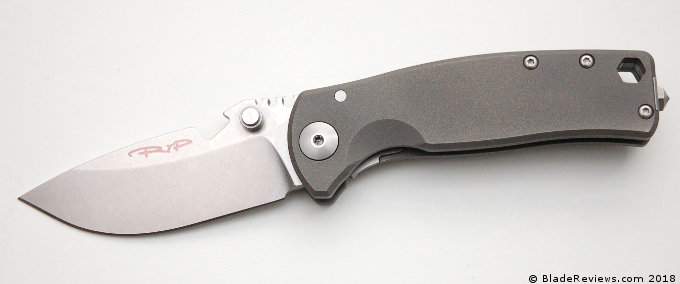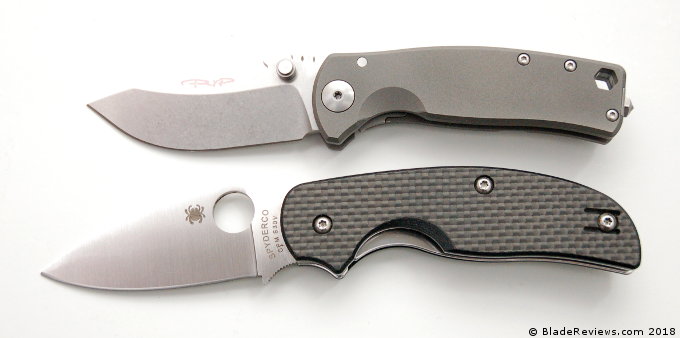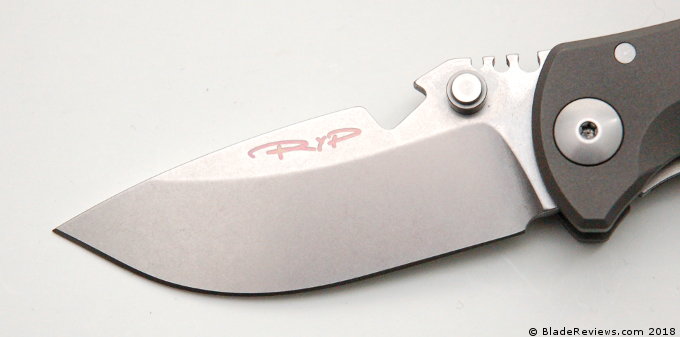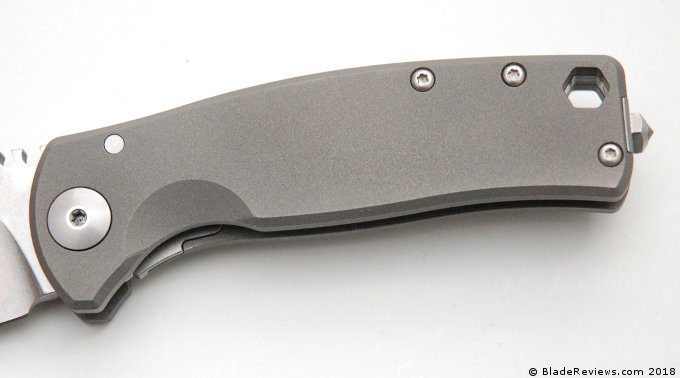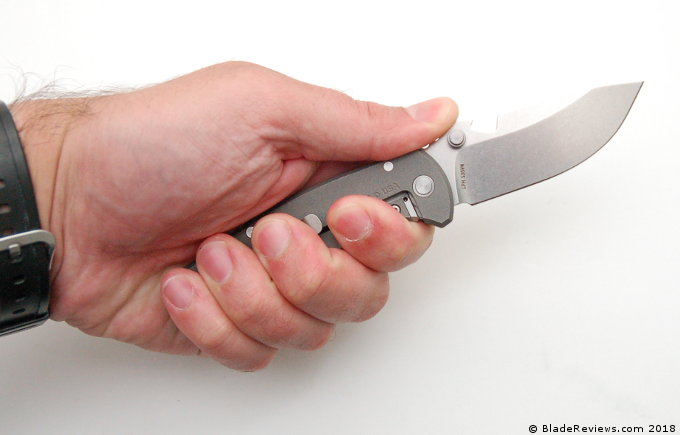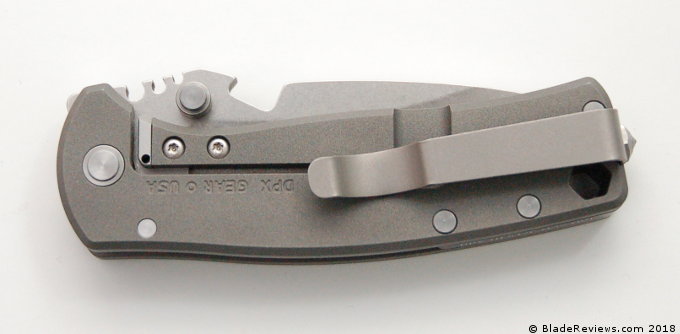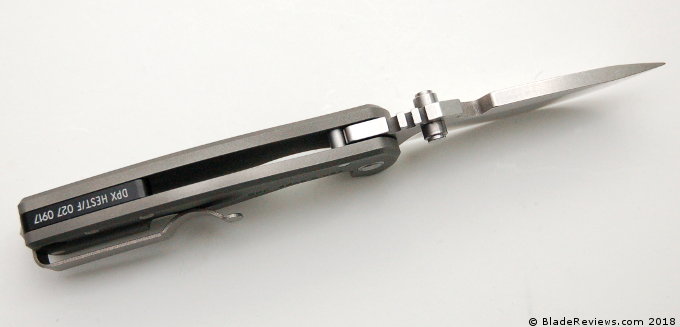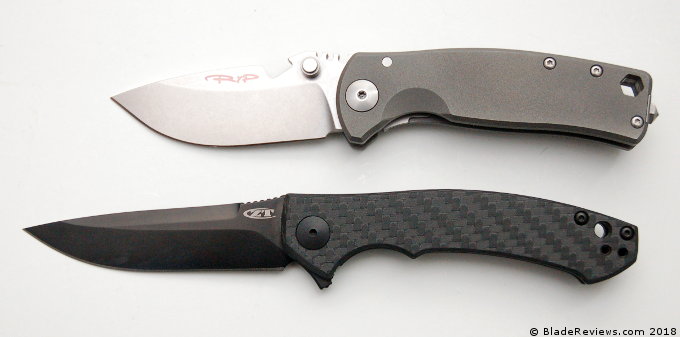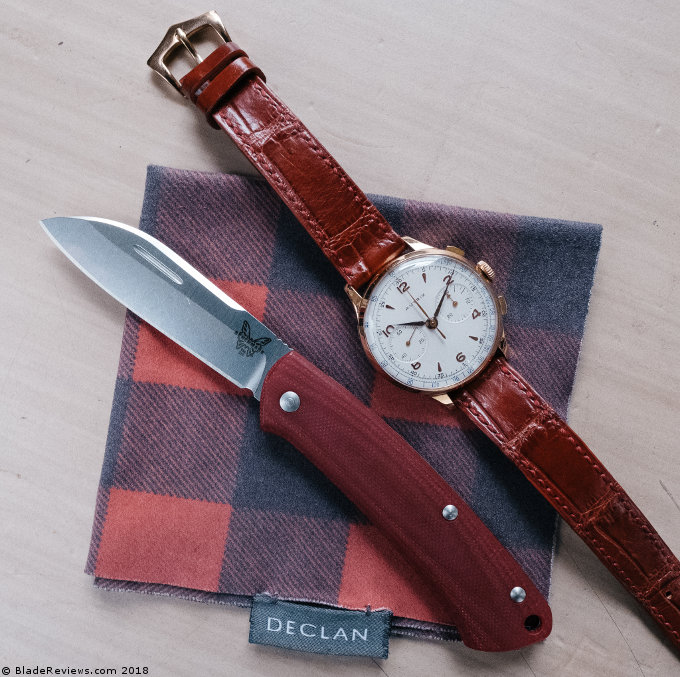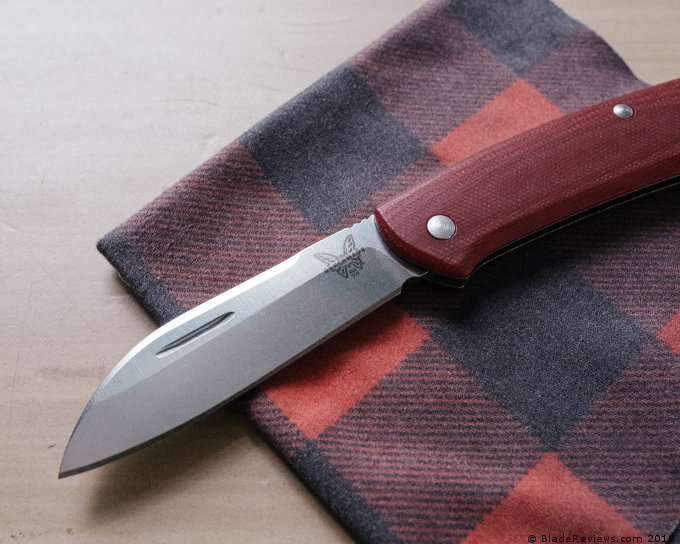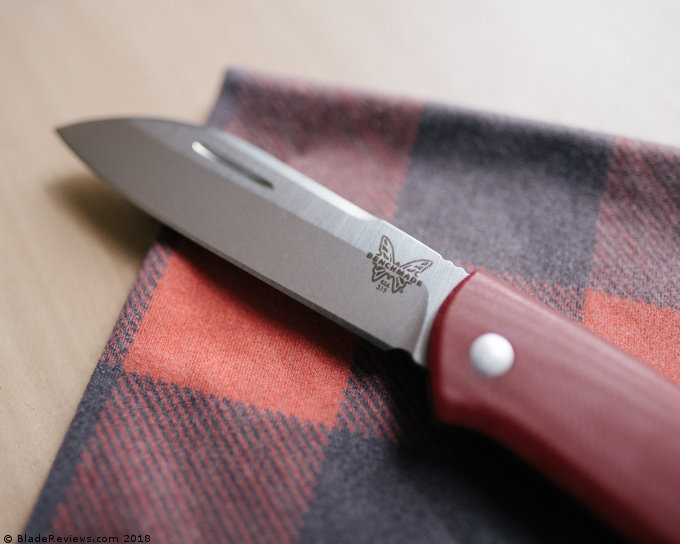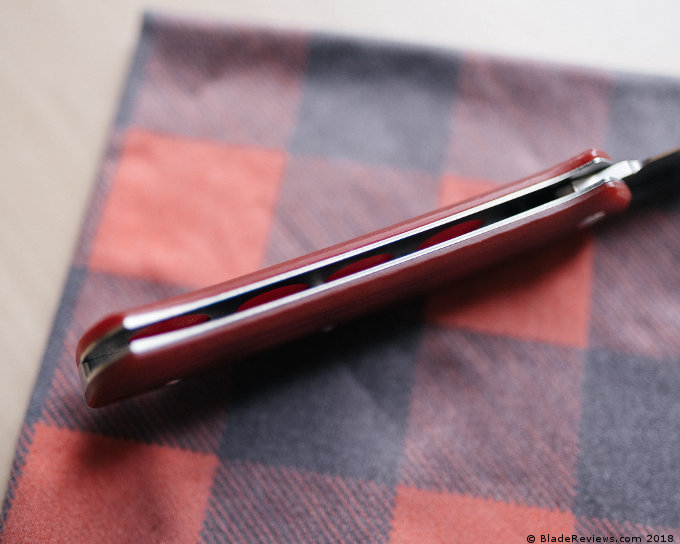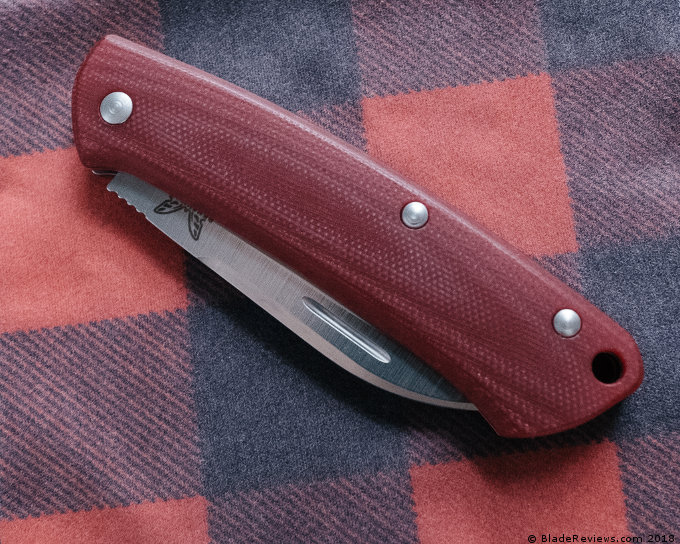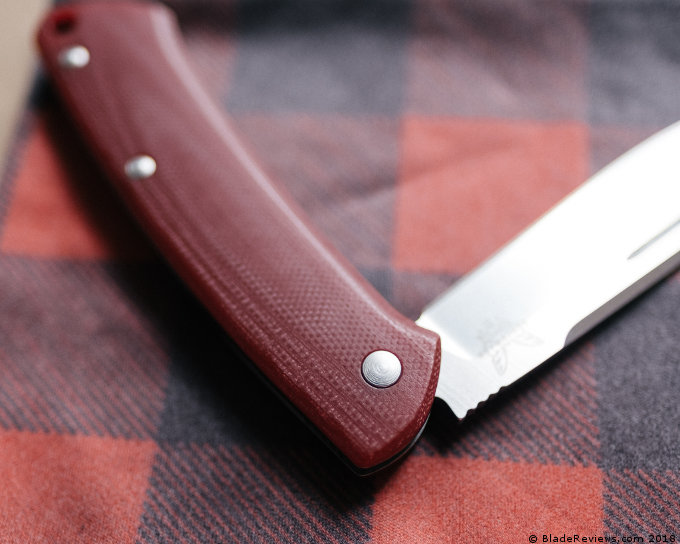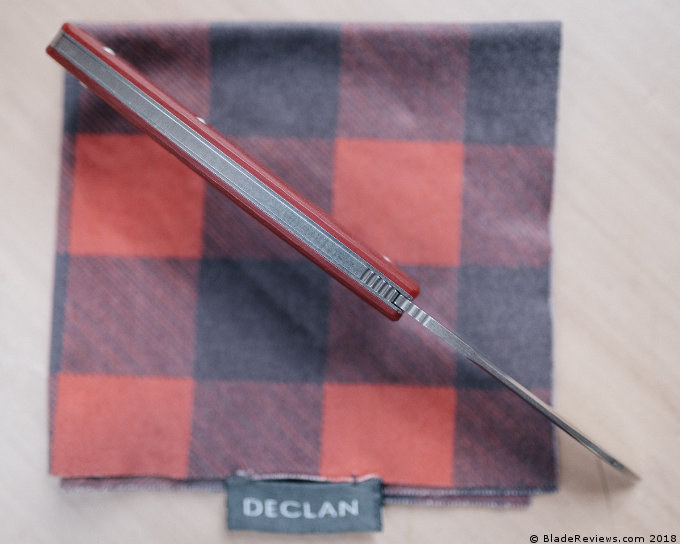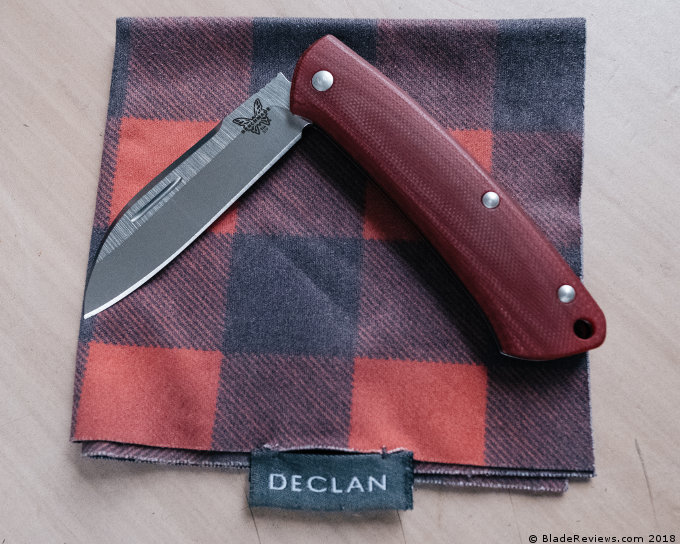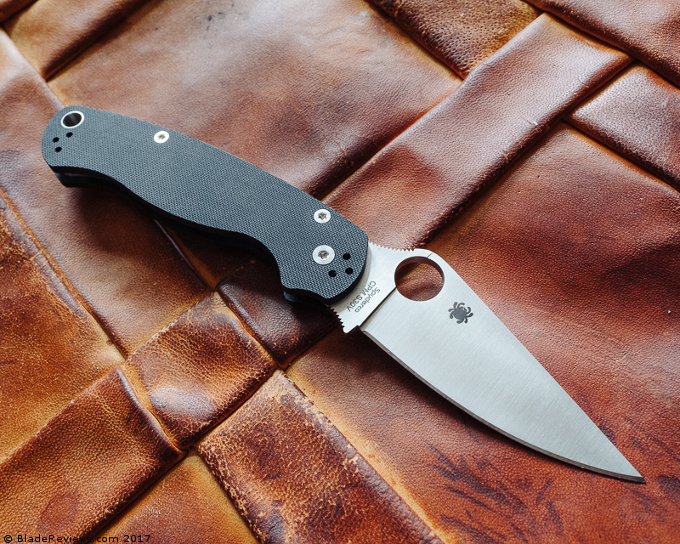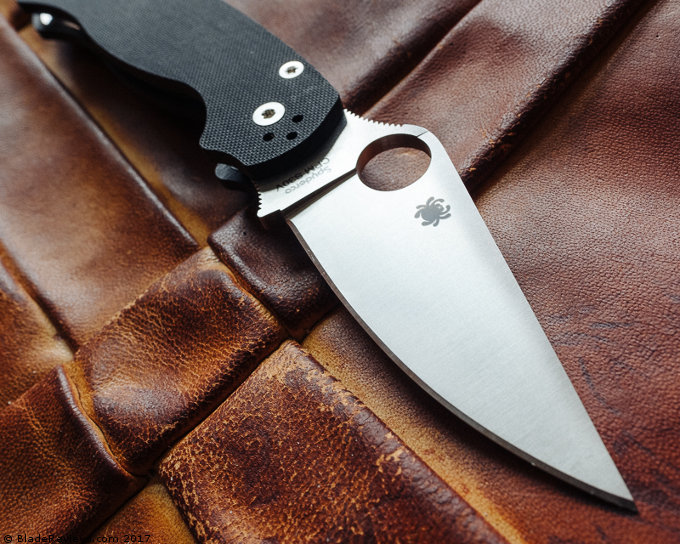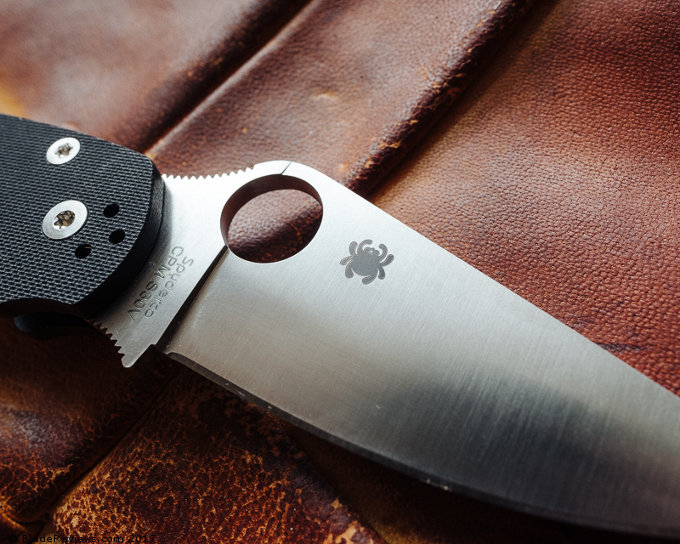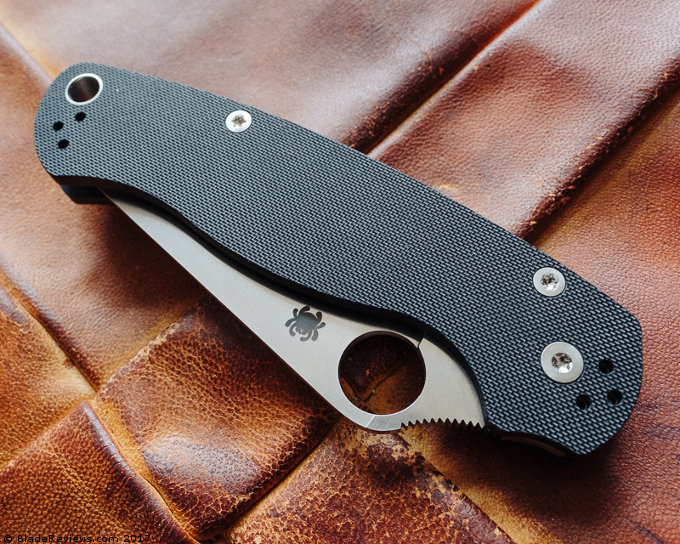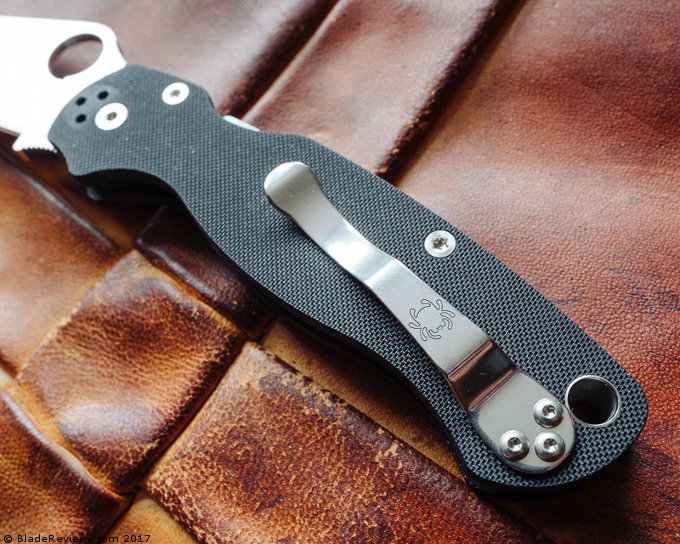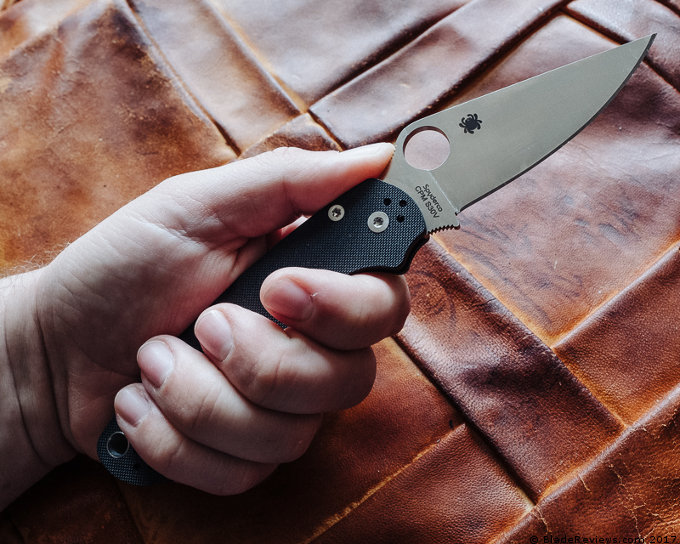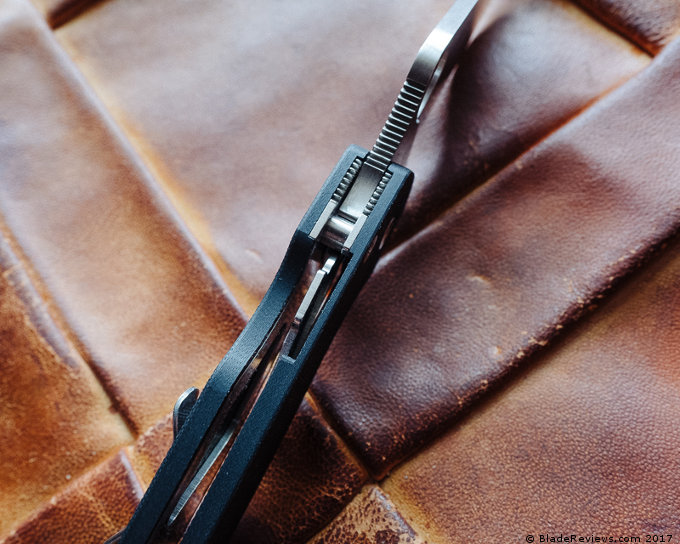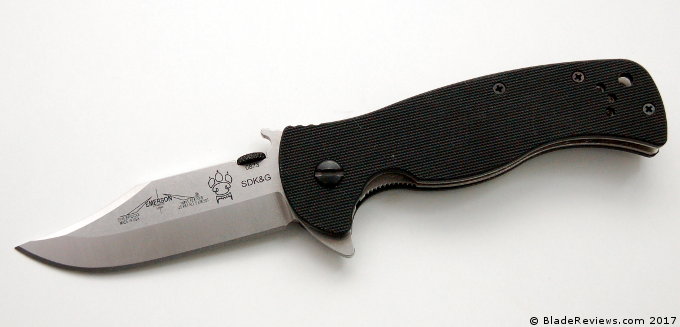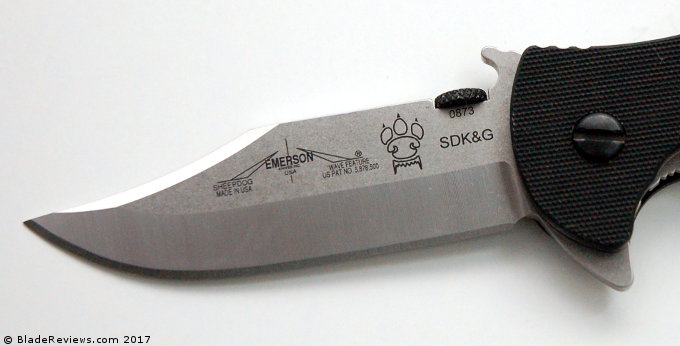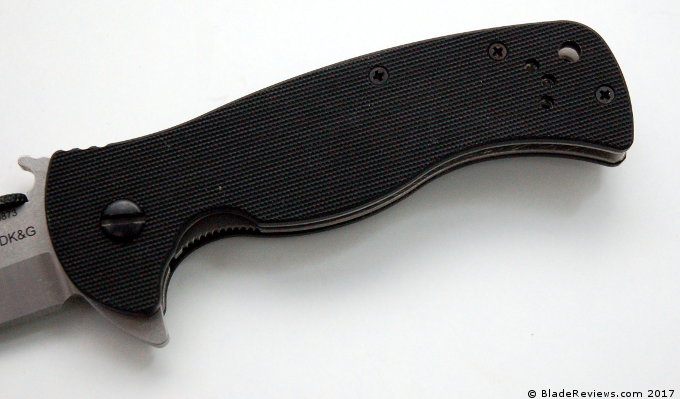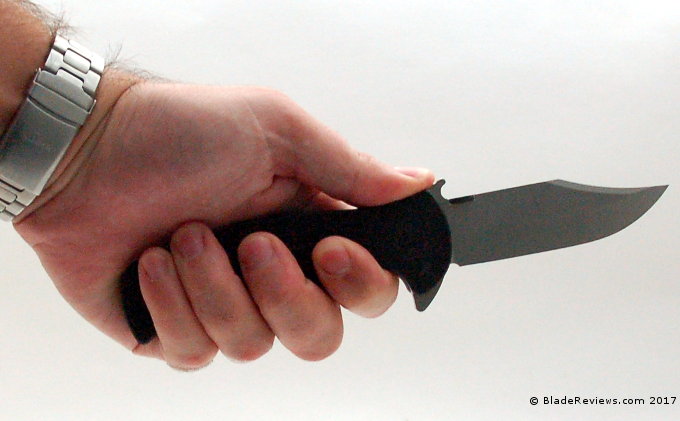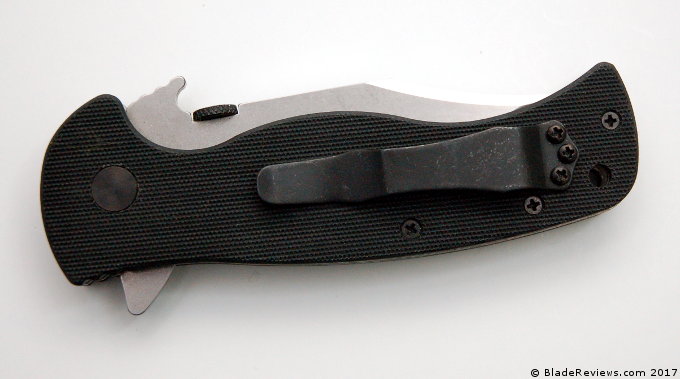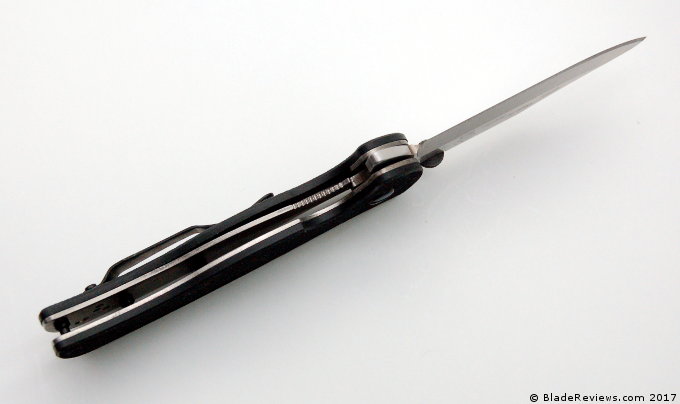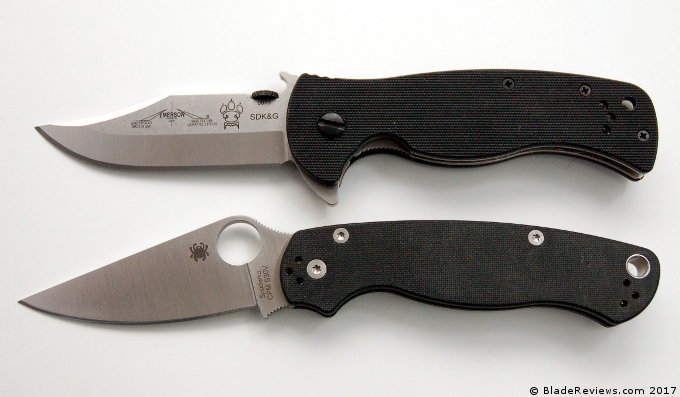Last Updated: July 18, 2019
There was a time when Benchmade was kinda the sleepy “Gunshop Knife Brand.” There would always be a few dusty Griptillians sitting in the case next to the preowned Glocks, and while the Grips might be fantastic value-props, they a bit vanilla-icecream-y if you get my meaning.
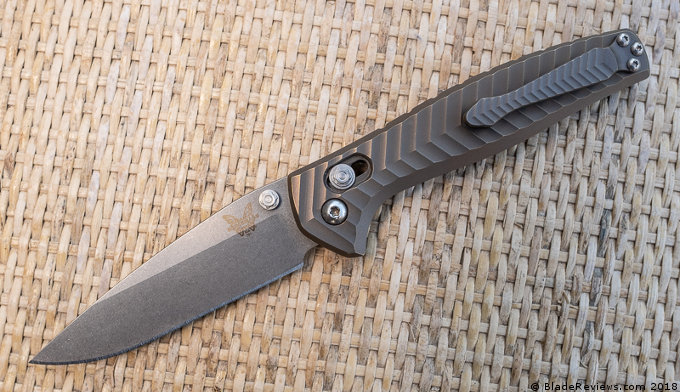
Buy the Benchmade Anthem at BladeHQ
However, something has been changing in the last few years. I don’t know if someone put some sriracha on the break table over there in Oregon City, or what, but something has injected some pep into their design team. Introducing the Anthem 781, Benchmade’s first Integral Titanium folding knife. There are lots to say about this one, but before I get too deep let’s go over some specs:
(Please note these measurements are according to my ruler and calipers, manufacturer’s listed measurements may vary.)
- Blade Length: 3.25” of cutting edge, 3.375
- Overall Length: 8.125”
- Thickness: .585” with clip, .421 handle only
- Blade Thickness: .115”
- Steel: 20CV
- Weight: 3.7oz
- Lock: The famed Axis Lock
- Country of Origin: USA
Blade Details
With a knife like the Anthem, I believe that it’s intended to be a daily carry type piece. It’s not overly large, doesn’t have any sort of complicated aspect to it, and the functional bits are designed to be, well, functional.
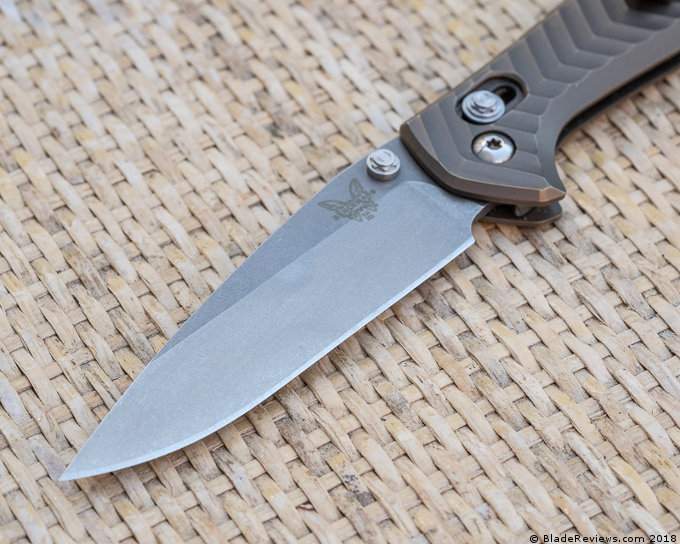
The blade is a great example of this: drop pointed shaped with a rounded (or crowned) spine. Eyeballing it, I’d guess that it’s flat ground but I suppose it could be a shallow hollow grind as well; either way, it’s a great slicer. It came out of the box with a very nice, toothy, utility edge and I didn’t feel the need to change this on my wicked edge. In the couple of weeks that I’ve been carrying it I have had occasion to break down boxes, slice up food, and perform just daily “knife-stuff” tasks with it, nothing crazy, no batoning or zombie apocalypse type stuff, but in terms of daily EDC tasks, it excelled.
In terms of the steel, I will briefly comment on it: Benchmade chose 20CV for this blade, and I believe that to be an excellent choice for a knife like this. 20CV is a high toughness and corrosion resistance steel, that hardens to around 62HRC. I have no means testing to see if my knife is in that range, but I can tell you that it’s performed beautifully and has been easily maintained on a strop. 20CV is very similar to M390 (one of my favorite steels) and I have been really pleased with it in this application.
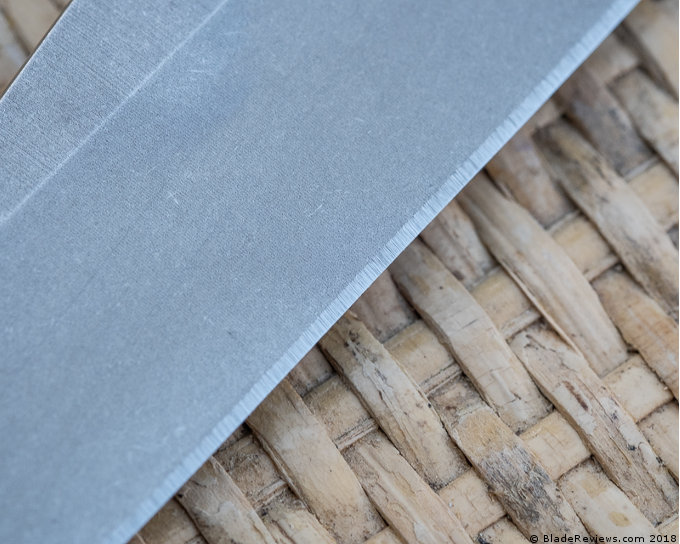
Handle, Ergonomics, and Pocket Clip
Ah yes… The INTEGRAL handle. This is really what makes this knife stand out, isn’t it? This is the first Integral from Benchmade. For those of you not familiar with the term: Integral means that the handle of this knife is milled out of a single block of Titanium as opposed to two that are screwed together. There aren’t any screws holding the knife handle together. In the past, this level of knife making was reserved to custom makers that had a lot of time on their hands (it takes a while to mill a channel out of a block of Ti) but recently a few companies have started incorporating integrals into their lineup.
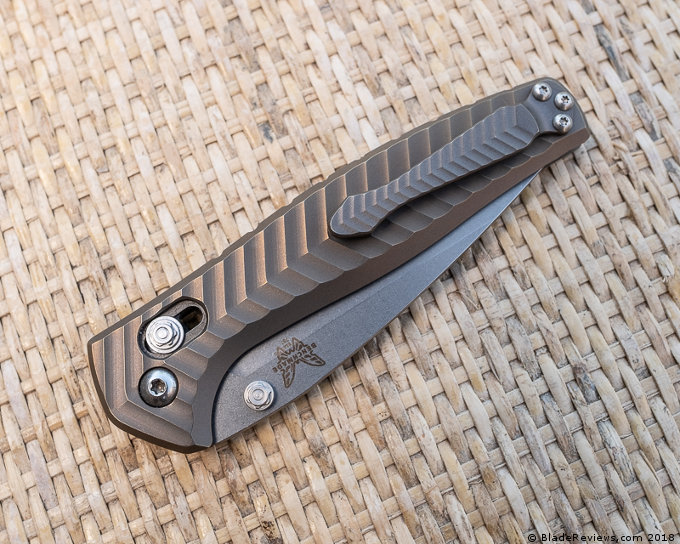
One of the interesting things about Benchmade’s execution of the integral handle is how they incorporated the axis lock into it. When you look at the spine of the knife (the money shot of any integral) you’ll see two screws hidden in the decorative milling, these hold the locking method in place.
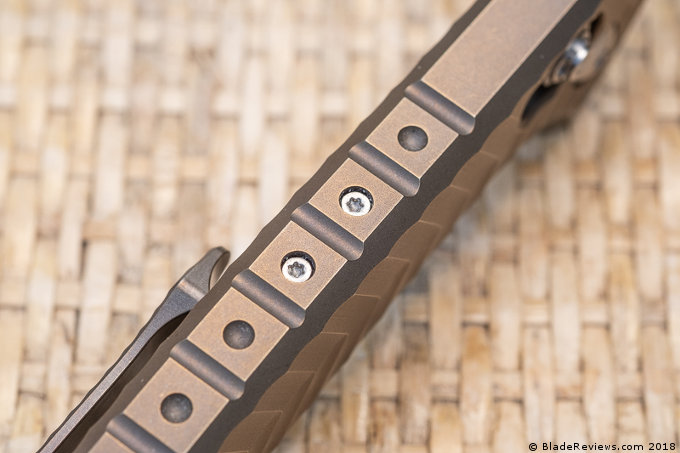
In the hand the first thing that came to mind for me was how thin the knife is; It carries very well in the pocket and feels great in hand. The handle itself is trim in both dimensions thickness and height, but there is a sort of faux-choil towards the blade that locks the hand in securely when holding the knife open. Otherwise, the milled texture gives you a little bit of grip on what would otherwise be a pretty slick knife.
The pocket clip is an ambidextrous milled Ti clip that is more than a little phallic, but it is also very functional. There are several makers out there that are offering custom clips made from Moku-Ti so if you want something different there are options for you. The knife carries well with approx 1/2” sticking out of the pocket, offering a perfect grip to withdraw it.
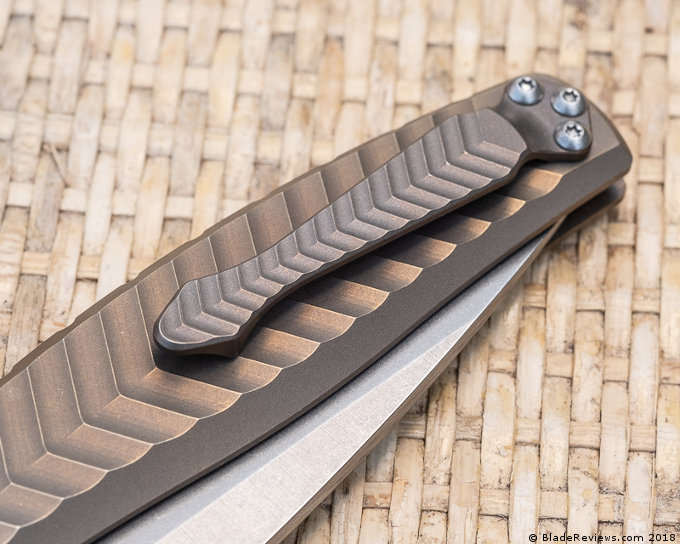
Deployment and Lockup
The blade on the Anthem opens by way of ambidextrous thumb studs. The blade deploys easily thanks in part to bearings washers. The action is smooth and easy.
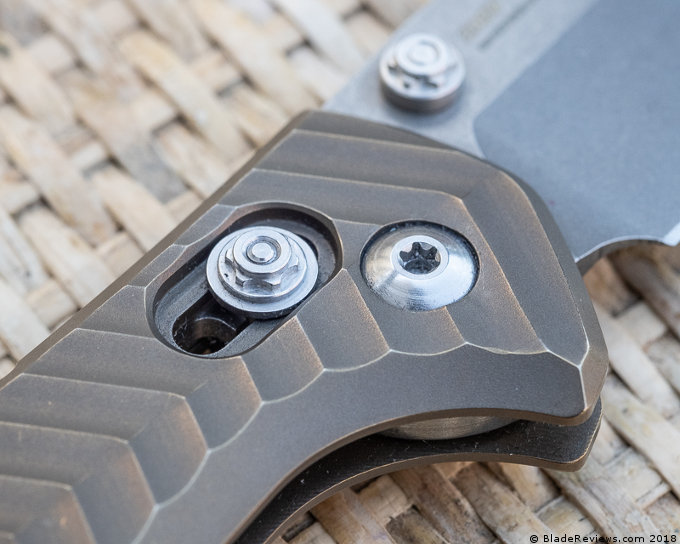
For lockup, the Anthem comes equipped with Benchmade’s Axis lock. I’m not sure there’s much to say about the Axis lock that hasn’t already been said. It’s an incredibly solid lock mechanism that isn’t prone to lock rock, doesn’t really suffer from failures in the way a liner or frame lock might, and it is completely ambidextrous to use. The execution of the Axis lock is worth noting on the Anthem, there’s a block screwed to the spine of the knife that acts as the anchor point for the axis lock mechanism.
Benchmade Anthem Review – Final Thoughts
So to wrap all this up…the Benchmade 781 Anthem is a great step forward for Benchmade knives. I think it shows a focus shift on Benchmade’s part too, hopefully, starting to produce some higher-end knives. I am also very pleased to see their adoption of some different steels. I love CPM154 and S30V, but it’s good to have some variety. Between the 20CV here and the S90 in the 940-1, it’s been refreshing.
Now, the caveat to this entire review: This is an expensive knife. MSRP is around $500, with retail landing closer to $425 on BladeHQ and Amazon. Competitively, this puts you in the ballpark of a Chris Reeve, or above the ballpark of some really nice Zero Tolerances, but what you’re paying for here is the time and difficulty in making the handle. It’s a remarkable feat, but you have to decide if it’s worth it to you, for me it was too cool to pass up. The nice thing, however, is that you won’t be getting a gimmicky integral for that price—you’re going to be putting a knife that will make a great daily carry in your pocket.
- CONSTRUCTION - The AD-10 tactical folding knife features an ultra-wide, ground thin at the edge, honed to razor-sharpness blade that offers unprecedented cutting, shearing, and piercing power while resisting bending, breaking, or chipping
- S35VN STEEL BLADE - Crafted from S35VN steel, the AD-10 folding knife's blade ensures super-fine cutting edges and exceptional edge retention; This premium steel is renowned for its durability and ability to maintain sharpness through rigorous use
- STRONG HANDLE - The handle of the AD-10 knife boasts heat-treated, full-length aluminum liners and 3D machined G-10 scales, providing unparalleled strength and grip; Its precise contouring and integral finger guard ensure a snug and secure fit in the hand
- TRI-AD LOCK - Complete with the Tri-Ad, the AD-10 offers unrivaled strength, shock resistance, and durability; This reliable locking mechanism provides peace of mind, safeguarding your fingers during use and ensuring the blade remains securely in place
- SPECS - Weight: 7 oz (198.4 g); Blade Thickness: 3.8 mm; Blade Length: 3 1/2"; Blade Steel: S35VN; Handle Length/Material: 5 1/4" G-10; Overall Length: 8 3/4"; Knife Type: Folder; Blade Shape: Drop Point; Locking Mechanism: Tri-Ad Lock
I recommend purchasing the Benchmade Anthem at BladeHQ or Amazon. Please consider that buying anything through any of the links on this website helps support BladeReviews.com, and keeps the site going. As always, any and all support is greatly appreciated. Thank you very much.
